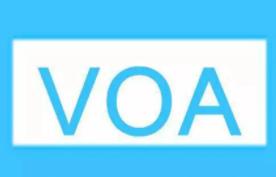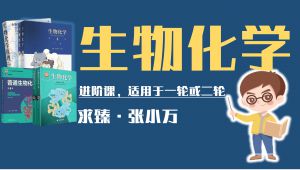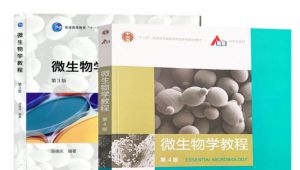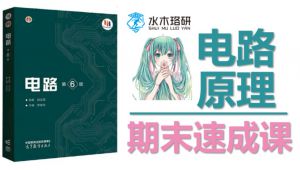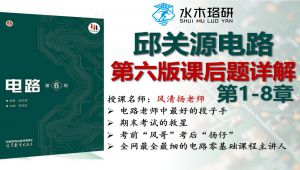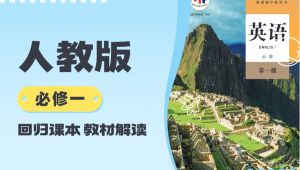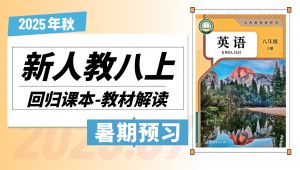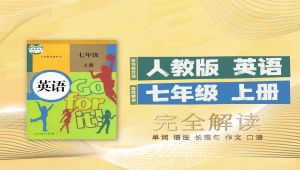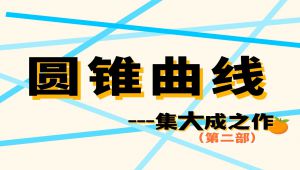- News Literacy Lesson 6: News and Social Media
- News Literacy Lesson 5: Quality of News Reports
- News Literacy Lesson 4: Balance Fairness
- News Literacy Lesson 3: Establishing the Truth
- News Literacy Lesson 2: Verification Independence Accountability
- News Literacy Lesson 1: Real News vs. Fake News
- News Literacy Introduction: News Through Time
- Independent Bookstores Growing in the US
- Natural Bridge Wildlife Ranch
- North and South Korean Leaders Open Summit
- Baby Gorilla Born at National Zoo
- Cherry Blossoms Bloom at National Arboretum
- US Students Lead Massive Protests to Demand Gun Control
- How to Pronounce /f/ and /v/
- How to Pronounce the Sound /r/
- How to Pronounce the Sound /er/
- How to Pronounce the Sound /w/
- 2017: A Year Marked by Disaster Violence
- President Trump First Lady Light the National Christmas Tree
- Tehran Attacks
- 特朗普会见北约和七国集团领导人
- 川普访问沙特阿拉伯
- France Elects Macron Rejects Le Pen
- Met Gala 2017
- President Trump First 100 Days
- rotests in South Korea over THAAD Site
- Trump Congratulates Astronaut Whitson for New Record
- Dental Students Play Doctor in Virtual Reality
- Footwear Made from Recycled Water Bottles
- MOAB Bomb
- Explainer: Climate Change and Carbon Dioxide
- One of the World’s Oldest Steam Engine Train Running Again
- Robot Leopard Draws Attention to Big Cat Conservation
- Doctors Worry About Post-Antibiotic Future
- Highlights of President Trumps Address to Congress
- Making Ice Storms in a Lab
- Supreme Court Justices Process
- President Trump Immigration Order and the Courts
- 3D Printers Allow Tanzania Hospital to Make Artificial Limbs Quickly
- Super Bowl Is Big Business for Big Ad Firms
- Secretary of State Rex Tillerson Address to Career Diplomats
- Trump Names Neil Gorsuch to US Supreme Court
- Learning to Read in Safaliba Helps Kids Learn English
- Genetically-Engineered Bacteria Could Fight Cancer
- Hippos: The Life Force of African Rivers
- Could Computers Heat Homes?
- Motor-Free Device Reduces Stress from Walking
- In Ghana Learning to Read in Safaliba Helps Kids Learn English
- Work Schedule Changes Could Cure Social Jet lag
- Use of Antibiotics in Farm Animals Is Expected to Grow
- US Senate Committee Approves Trade Promotion Authority Bill
- Pirates a Threat in Southeast Asia
- Everyday Grammar: Gerunds and Infinitives
- One Billion Young People Risk Hearing Loss From Loud Music
- Researchers Aim to Develop Better Fruits and Vegetables
- Scientists Use Sound Waves to Find Hidden Cracks in Bridges Airplanes
- US Supreme Court Justice
- Reaction to Trumps Travel Ban
- President Obamas Farewell Address
- Michelle Obamas Last Official Speech as First Lady
- A Look Back at the 2016 US Presidential Race
- White House North
- A VOA Learning English Thanksgiving
- World Bank Head Sees Other Development Banks as Allies
- Cameroon Builds Classrooms for Students Fleeing Boko Haram
- Cambodia Plans to Expand Healthcare for Expecting Mothers
- Gene in Plant Could Increase Crop Production
- A Robot Helps Heal Muscle Damage
- Everyday Grammar: Put Prepositions in Their Proper Place
- Climate Change Blamed for Disasters in Syria and California
- Robot Scientist Helps Design New Drugs
- Arizona Law to Require High School Students to take Citizenship Exam
- Study: Women More Likely to Go to Female Healthcare Workers
- Environmental Group Opposes Genetically-Engineered Rice
- New Metal Recovery Methods Save Energy and the Environment
- Is China Continuing Big Spending to Lift Its Economy?
- Satellite Will Watch for Sun Storms Warn Earth
- Graphene Manufacturing Picks Up in US
- Currency Issues Play a Part in Trade Talks
- Five Ways to Get Your Message Across
- Sri Lankan-American Gives Back to Her Home Country
- Scientists Look to Engineer Crops That Need Less Water
- Worms Can Teach Us a Lot About Space Travel
- China Increases Aid to South Pacific Area
- Using Body Language Can Help Your Public Speaking Skills
- Program Gives Low-Cost Glasses to Rwandans
- Britain Permits "Three-Person Babies"
- Capturing CO2 Gas Is Not Easy
- US West Coast Ports Working Again
- Understanding the Teenage Brain Can Lead to Better Parenting
- Food Safer in Africa’s Open-Air Markets Than In Supermarkets
- ‘White Space’ Gives Ghanaians Less Costly Internet
- Taiwan Makes Changes to College Entrance Exams
- Will We Taste Smell and Touch with Smartphones?
- Killing of Rhinos in South Africa Increases in 2014
- Foreign Companies Feel Increasingly Unwelcome in China
- Farmers Use Creative Methods to Grow Crops
- Mobile App Preserves African Folktales
- How Fast Can a Camera Take Pictures?
- Environmental DNA Provides Clues About Life on Earth
- Scientists Link Air Pollution to Autism in Children
- New Minister Cleans Up Cambodian Schools
- Greece Seeks to Re-negotiate Loans
- Treament May Stop Alzheimers Memory Loss
- Project Uses Global Imaging to Stop Illegal Fishing
- Mall in Brazil Reduces Carbon in the Atmosphere through Composting
- Health Agreement Asks Chinese People to Help Strangers
- Economic Growth in Asia Threatens Environment
- US Company Develops Space-Based Plane Tracking
- How Poverty Could Limit Learning
- Screams Have Special Place in the Brain
- Study Finds Fewer Tigers Than Once Thought
- Futuristic Transportation System Moves Closer to Reality
- Chinas Stock Market Hit with Turmoil in July
- More Comparisons Between English Tests
- China: Not Using Organs from Executed Prisoners
- Effects of Ebola Still Hurting West African Schools
- Regulators Criticize Chinese Internet Company Alibaba
- Warning of Risks Economists Predict Gains in 2015
- College Women Return to Guide High School Students
- The Pomegranate: a Healthy Food for the Last 5000 Years
- French Farmers Using Drones to Examine Their Crops
- Printed Model Heart Guides Surgeons and Saves Lives
- Worlds Longest Railway Links China and Spain
- Tips for Writing: They Say I Say
- Treament May Stop Alzheimers Memory Loss
- US Study Shows Climate Change Affecting Bird Migration
- How Do You Develop More Female
- Will Robots Run as Fast as Cheetahs?
- ‘Highly Effective’ Ebola Vaccine Developed in Guinea
- Urgent Move to Freeze DNA Before Creatures Die Off
- Simulation Technology Helps Control and Manage Traffic
- Activists Warn: Greece not the Only Country Facing a Debt Crisis
- TOEFL or IELTS? Comparing English Tests
- Eat Nuts to Stay Healthy
- Louisiana Plans to Use Settlement Money to Restore Coast
- A Bladeless Wind-Powered Generator Keeps Birds Safe
- Malala Yousafzai Urges Leaders to Buy Books Not Bullets
- Cancer May Result from Mixtures of "Harmless" Chemicals
- Fish Use Whole Bodies When They Eat
- Warning System Keeps Swimmers Out of Polluted Water
- China Fights Stock Market Drop
- Affirmative Action Case Returns to the Supreme Court
- Ebola Tops Health Stories in 2014
- The Hungriest Place on Earth?
- Robot Finds Unexploded Mines Underwater
- Greeks Prepare for Early Elections
- Young Activist Praises Girls’ Gains in Education
- Health Issues That Interested You in 2014
- Low Prices Hurt Asian Rubber Farmers
- Voting Rights Act Remembered in Selma 50 Years Later
- Tiny Needles Treat Eye Disease
- Experts: Writing Well Means Making Changes
- Exchange Value of Russias Money Drops Sharply
- Can Light Pollution Harm Your Health?
- Experts: Writing Well Means Making Changes
- Safety Concerns Raised for Ride-Sharing Service
- Growing Minds Need Greener Spaces
- Israel Helps California Deal with Water Shortages
- One-Person Flying Vehicles Close to Reality
- Experts: China May be Facing Economic Problems
- Bringing the Internet Closer Helps Students
- WHO Warns Against Unnecessary Caesarean Sections
- New Technology Fights Graffiti in Australia
- Successful Program Reduces College Sexual Assaults
- Sweet Potatoes as Medicine?
- Extremely Dry Weather Raises HIV Risk Researchers Say
- Robots Ready to Work in Restaurants
- Difference between Rich and Poor Is Holding Back Economies
- My Students Know More About the US Constitution Than I Do
- Hot Weather Can Be Deadly
- High-Tech Material Can Cool Buildings
- US Ethiopia Work to Train Women Farmers
- Dispute Over Religion Language in Schools Builds in Turkey
- Is a Western Diet Bad for Your Health and the Environment?
- Cambodian Thai Rice Voted Best in the World
- Hoverboards Ignore Gravity
- Labor Group Says Wages in Developed Countries Almost Unchanged
- WHO: Indoor Air Pollution a Major Threat
- Herders in Kenya Turn to Farming
- Dispute Continues Over New US Internet Rules
- Some Asian Nations Gain From Lower Oil Prices
- Writing Narration Often Involves Personal Experience
- The WHO Warns Plague in Madagascar Could Spread
- More Indians Enjoy Wine
- 3-D Tools Help Investigators Recreate Crime Scenes
- Egypt Says Expanded Suez Canal to Open in August
- The ‘Living Wage’ Debate Has Many Sides
- Students in Cambodia Want to Learn English
- Fighting Obesity: A Long-term Complex Problem
- Can Forests Help Feed the World?
- Social Media Apps Help Public Agencies But Raise Questions
- LinkedIn EF Offer New Test for English-Learning Professionals
- Most African Children with AIDS Have No Access to Medical Care
- Plankton More Important than Scientists Thought
- Heat-Resistant Glassware Celebrates 100th Anniversary
- Free Trade Deals Raise Job Concerns
- We The People National Competition
- The Brain Remembers Language Better If You Sing It
- Filipino Fishermen Build New Boats with Fiberglass
- Falling Oil Prices Affect Nations Differently
- South Korean Students Stress Over High School Exams
- Ingredient in Chocolate May Aid Memory and Heart
- In Bangladesh Floating Farms Answer Rainy Season Flooding
- South Korea Seeks to Reuse More E-Waste
- China Opens Shanghai Stock Market to Hong Kong
- Expand Your Skills for Writing College Papers
- Center Helps Ugandas Disabled Children
- Farmers Raise Vegetables in a Combination of Fresh Sea Water
- Ghanas Bamboo Bikes Hit the Streets
- Debate Over Chinas Development Bank Continues
- At One Jail in Kenya Prisoners Become Students
- Progress in the Fight Against Ebola Comes with a Warning
- Heated Dispute Over Catfish in the US Senate
- Successful Debaters Find Career and Life Rewards
- Satellites Study Weather Conditions and Help Predict Disease
- Widely-Used Insecticide Is Damaging Wild Bee Populations
- Ransomeware Is the Latest Threat to Your Computer
- Google Opens First Campus in Seoul
- Honest Debate Is About Understanding
- A New Phone Could Help Deaf-Blind People Communicate
- Project in Cambodia Finds Success in Improving Nutrition
- US Agency Announces Wave Energy Prize Competition
- Aid Group Calls for Debt Cancellation for Nepal
- Express Yourself and Debate Opinions and Ideas
- New Paint Resists Oil and Water
- US Senate Committee Approves Trade Promotion Authority Bill
- Low Prices Cause Kenyan Farmers to Change Tea Crop
- A Snake Robot Acts Like the Real Thing
- One World Trade Center Opens for Business
- Sierra Leone Uses Radio to Replace Classes
- People Travel to South Africa for Cosmetic Surgery
- Farm Visitors Increase Farm Profits
- Writing Groups Can Help Student Do Better on Papers
- How a Magician Uses His Trade to Heal
- Cow Head Meat Remains Popular in South Africa
- Researchers Develop Method for Printing Tissue
- US Teachers Reach Out to Indonesians in Access
- Luxembourg Set to End Bank Secrecy
- Kenyan School Program Helps Hungry Schoolchildren
- Vaccination of Dogs Can End Rabies Threat
- Fit Kids Have Better Test Scores
- Surveillance Software Causes Concern at Internet Meeting
- Building a Windbreak Protects Crops
- Outbreaks Like Ebola Also Hurt Economies
- Schools in Cameroon Face Boko Haram Threat
- Taking Notes by Hand Is Better for Understanding
- Cocoa Smuggling Increases in West Africa
- Chinas Internet Addiction Camps
- Higher Education Opens to More People Worldwide
- Turn Negative Writing Experiences Into Positive Ones
- Health Organization Calls for Suicide Prevention Policies
- Sides Debate Use of Genetically-Modified Crops in Africa
- Researchers at Virginia Tech to Help Make Drone Rules
- As the World Ages Economies Will Change
- Environmental Group Warns Earths Health at Risk
- Teens Help Seniors Enter New High-Tech World
- Jean Tirole Wins Nobel Prize in Econmics
- Having a Problem with a School Paper?
- Dealing with the Distractions and Overreactions of ADHD
- Climate Change Might Hurt Many Farms in Africa
- Young Engineer from Cameroon Invents Cardiopad
- Chinese Company Buys New Yorks Waldorf Astoria
- Senegal Uses Technology to Teach Reading
- Is Kale a Superfood?
- Dry Weather Hurts Farmers in Southwestern US
- Worlds Rich Get Their Own Facebook
- US Economy Shows Sharp Growth From April to June
- US Program Aims to Support Girls Education
- Thousands of Chinese Students Choose American High Schools
- Official Warns of Limited Opportunity to Fight Ebola
- New Genetic Research May Make Tastier Tomatoes
- Brain Imaging Comes to Children in Poor Countries
- “Exploding” Lake to Provide Power in Rwanda
- School Attendance by Australian Aborigines Linked to Aid to Parents
- Study Identifies Problem in Polio Vaccine
- Growth Climate Change Threaten African Plants and Animals
- A Step Forward in Artificial Intelligence Research
- Hundreds Attend Free Language School in Hanoi
- Raw Chocolate May Be Healthier
- Conflicts Place Heavy Demands on World Food Program
- Use of Public Transportation in US Highest in Almost 60 Years
- Foreign Investors Returning to Vienam After Anti-China Protests
- Japanese Carmaker Toyota Says it Will Pull Out of Australia
- Community Colleges Offer Another Way to Earn a Degree
- A New Study Finds Anti-Smoking Rules Could Prevent 13 Million Deaths in China
- UN Declares 2014 the International Year of Family Farming
- Brain-controlled Devices Could Help Paralyzed Patients
- Burma Experts Fear an End to Rights Reforms
- Programs Provide Opportunities for Foreign Engineers
- Study Finds Caffeine Improves Long-Term Memory
- Growing Popularity of Quinoa has its Ups and Downs
- Drones Raise Hopes and Questions in Africa
- Political Unrest Increases Pressure on Ukraines Economy
- A Dance Education for Street Children
- Children in Burkina Faso Educate Families about Malaria
- Scientists say Neglected Plants Could Help Fight Hunger in Africa
- Chinas Alibaba to Sell Stock on the New York Stock Exchange
- Expert Shares Suggestions for Writing that Scary School Paper
- Brain Imaging Helps Decide Treatment for Clinical Depression
- Africa Could Lose 30 Percent of Its Plants and Animals by 2100
- European Airplane Maker Prints Some of Its Parts
- Economists Are Hopeful About Africas Economy
- A South African School Educates Teenage Mothers
- While We Sleep Our Brains Are Hard at Work
- The Slow Food Movement Looks to Africa
- Conflict in Gaza Makes a Mark on Social Media
- Continued Growth Expected for African Economies
- Tense? Consider Mindfulness Meditation
- Farmers Learn Skills Online
- Scientists Base a Hearing Aid Design on the Ears of a Fly
- Video Games Might Help People with Dyslexia
- US Businesses Are Hopeful About the 2014 Economy
- American Student Group Offers Direct Aid to Women in Somalia
- Scientists Search for a New Way to Stop Mosquitoes
- New Farm Bill Becomes Law in the US
- New York City Invests Heavily In Biotech Development
- Political Unrest Threatens Thailands Economy
- UNESCO Says Poor Education Costs Billions of Dollars
- World Health Organization Warns of Polio in Pakistani City
- Lack of Rainfall and Snow Hurts Farming in Western US
- Facebook and Google Buy Two India-based Start-Up Companies
- Hopes Rise for Improved Indian Economy
- Librarians Name Most Notable Books of 2014
- Researchers: Training Improves Mental Skills in Older People
- US Economy Expands Sharply from April to June
- Thousands of Africans Are Studying in China
- Marijuana Could Be an Effective Epilepsy Treatment
- Can the World Support Its Huge Demand for Fish
- Indonesian Smartphone Use Rises
- Is a College Education Worth the Money?
- Guided Conversations Give Back Memories to Senior Citizens
- Are Robot Milkers the Future of Dairy Farming?
- Brazil Hosts a World Cup for Robots
- Europe Considers Fracking to Cut Russian Gas Imports
- A Young Activist Works in Support of Girls’ Education
- Ways to Avoid Ebola Infection
- Thailand Moves to Change Program for Rice Farmers
- Phone App Helps Diabetics During Ramadan
- Agricultural Crisis Hits Central African Republic
- Chinas Economic Expansion Slows to 7.7 Percent
- Pakistan Names a School for a Student who Stopped a Suicide Bomber
- US Report Says Smoking is Even Worse Than Believed
- Researchers Look for Non-traditional Ways to Fight Weeds
- Students Race Solar Cars in South Africa
- World Economic Recovery Not Creating Enough Jobs
- Afghan Women Make Gains in Kandahar Province
- US Report Says Smoking Worse Than Thought
- New Farmers Go to Work in Maryland
- Wearable and Interactive Technology Star at Consumer Electronics Show
- United Nations Agencies Want to Make Aid More Effective
- Nigerian University Students Return to Classes After Strike
- A New Device Can Find Malaria Infections in Seconds
- Will Brazil See Economic Gains from 2014 World Cup?
- North American University Professors Question Chinese Programs
- New Mammogram Technology Better at Finding Breast Cancer
- Thousands Get Agricultural Assistance in CAR
- Taiwan Shows Off Smart Watches Glasses at a Technology Exhibition
- Cambodia Promises Meaningful Economic Reform
- In Senegal Skin-Lightening Remains Popular but Risky
- Program Trains Young African Leaders
- High Technology Can Aid Agriculture
- Production of a Famous Indian Car Ends
- The Only State-run Bank in the US Has Record Profits
- Questions About China’s College Entrance Exams Could Lead to Changes
- Abuse of Alcohol Can Lead to Disease Death
- A ‘Dead Zone’ Spreads in the Gulf of Mexico Each Year
- US Officials Want Farmers to Use Less Antibiotics on Livestock
- How a Robotic Suit Helped a Man Walk
- US Senate Confirms Janet Yellen to Lead the Central Bank
- Nigerias Kano State Starts a Major Literacy Campaign
- US Officials Question Use of Antibacterial Soaps
- US Farmers Are Concerned About Ethanol
- A Smartphone App Could Help Pregnant Women in Uganda
- Bitcoin Creates Interest and Concerns
- Smithsonian Exhibit Explores the World of the Senses
- Study Says PTSD Therapy Helps Sexually-Abused Girls
- Poor Harvests in Africa’s Sahel Area Threaten Food Security
- No Major Progress in Talks Over a Trans Pacific Trade Deal
- Research Say Ideas About Music and Intelligence Are Mistaken
- With Telemedicine No Need to Leave Home to See a Doctor
- Mobile Games Are Becoming a Billion-dollar Industry
- International Migrants Sent Home
- Oil Boom in North Dakota Crowds Classrooms
- Electricity Could Ease Some Brain Disorders
- American Farmers Raise Alpacas for Fun and Profit
- Music Industry Builds Support Through Technology
- Indian and Chinese Officials Call for Closer Ties
- Pencils of Promise Has Built Schools on Three Continents
- President Obama Hosts Meeting on Sports Concussions
- Group Says Ending Hunger Could Be Within Reach
- A Solar Airpane May Soon Circle the Globe
- Jailed Cambodian Garment Workers Get Suspended Sentences
- Seventy-year-old College Student Graduates
- The Effects of Bullying Can Last a Lifetime
- The Story of the Poinsettia
- Where Is the Worlds Largest Solar Power Plant? California
- Big Building Projects in Addis Ababa Mean Blocked Traffic
- American Educators Have Big Dreams for Schools in Africa
- New Device Could Make Identifying AIDS Easier
- US Scientists Create First Two-dimensional Transistor
- World Bank Plans to Offer Health Insurance in Senegal
- Do Children Learn Better in Same-Sex Schools?
- Blood Protein Reverses the Effects of Aging in Mice
- Experts Share Advice on Growing Roses
- Hollywood Visual Effects Come From Around the World
- In South Africa Spaza Shops Fight for Survival
- Racial Segregation in US Public Schools Struck Down 60 Years Ago
- E-Cigarettes Cause a Rise in Calls to US Poison Centers
- A Story of Survival in the Central African Republic
- Ugandan Women Make Progress in Technology
- US Central Bank Chief Expects Better Economic Growth
- Punishment Policies Are Changing in US High Schools
- The Brains of Women and Men Really Are Different
- China Refuses Tons of Genetically Changed Corn
- Robots Can Do Dirty Dangerous Jobs
- Experts Debate Ways to Measure the Size of Economies
- Reports of Rape Abuse Surface at a School in Jakarta
- Experts Watch MERS Outbreak for Signs That It Could Spread
- Sea Shepherd Joins Senegals Campaign Against Poaching
- The 50th Anniversary of the Language That Changed the World
- Migrant Domestic Laborers Fight Abuses
- Hope of Progress Seen for Education in Africa
- A Los Angeles Group Seeks to Train More Minorities as Midwives
- The Face of the American Farmer Is Changing
- Vehicles May Soon Be Talking to Each Other
- Study Says Immigrants Help New York Economy and Quality of Life
- US Naval Academy Prepares Students to be Officers in the Navy
- Unusual Drug Used to Help People with Depression
- Four Million Sudanese Face Food Insecurity
- Three Dimensional Printing Raises Copyright Concerns
- Investors Consider Opportunities in Somalia
- Group Works to Save Memories of Rwandas Genocide
- The CrossFit Exercise Trend is Growing
- Overuse of Crop Pesticides Worries Vietnamese
- Computer Modeling Assists Investigations of Drone Strikes
- Savers Have Many Choices in the US
- Rights Groups Demand End to Schoolchildren’s Begging
- Study Finds Community-Based Mental Health Treatment Is More Effective
- UN Officials describe Africa as Most Food-Insecure Continent
- Designers Show Cars of the Future at the Geneva Auto Show
- Does a Fast-Growing Economy Mean Healthier Children?
- US College Entrance Exam Changes Could Hurt Foreign Students
- Study Finds Children Eat Better When Mothers Feel Empowered
- Fighting Could Lead to Famine in South Sudan
- Johannesburg Leads Africa in Tweets
- Toyota Agrees to Record
- South Africa Welcomes Chinese Language and Influence in Schools
- Scientists Explore the Healing Power of Rhythm
- Californias Dry Weather Could Lead to Higher Food Prices
- Dogs Understand How You Feel
- Bill Gates: Philanthropy Needs New Ideas
- Overseas Students Add to Their Education at US Community Colleges
- New Material Might Protect Bones From Breaking
- Philippines Prepares for First Rice Harvest Since Typhoon Haiyan
- Technology Brings New Life to Old Paintings
This is the VOA Special English Development Report.
One of the best ways to protect yourself and other people from getting sick is to wash your hands with soap. To make soap, you need three main things: oil, water and lye.
The oil can come from animal fat or plant sources like avocado, coconut or sunflower. Lye can be found at markets and other stores that sell cleaning products. Lye -- spelled l-y-e -- is also called sodium hydroxide or potassium hydroxide.
Be very careful. Lye can cause serious burns. It can also blind a person if it gets into the eyes. Do not breathe lye and do not let small children near it. And do not store lye in containers made of aluminum. The lye will eat through the metal.
But the owner of a soap making business in California says on her blog that there is no lye present in the finished soap. Diane Longacre says the lye and oil molecules combine and chemically change into soap and glycerin. Her blog is at frontierangelsoap.blogspot.com.
Some people make soap with potash lye. You boil ashes in water until only dry black salts remain. Once the salts melt, a gray-white substance is left. This is potash.
One simple way to make soft soap requires nine kilograms of potash. You also need twelve kilos of any kind of oil and twenty-six liters of water. Mix the potash well with the water. Add it to the oil in a wooden bucket.
For the next three days, mix the materials well with a wooden stick or spoon. Do this several times a day for about three minutes at a time. Then let the soap sit in the wooden bucket for about a month. After that, it will be ready to use.
In Mali, women's groups make and sell soap produced with jatropha seeds. In Rwanda, a group of people living with H.I.V./AIDS began making soap from local materials like palm oil and avocados. They developed a business with a loan from the aid organization Africare.
Healthier members of the group meet four times a week to mix the soap and cut it into pieces. An American organization called InterAction says the soap makers produce one thousand pieces each day. The soap is sold to the local health center, to a prison and to people in the community.
And that's the VOA Special English Development Report, written by Karen Leggett. More information about the soap making process can be found at practicalaction.org. Click on Practical Answers and enter "soap" as a search term. We will post helpful links at 51voa.com. I'm Mario Ritter.
This is the VOA Special English Development Report.
Fresh fish
There are different ways to store fish. Two ways to keep fish for future use are canning and freezing. Two other methods are drying and smoking. Today we have the first of two reports describing, step by step, how to prepare dried or smoked fish.
Begin with fish that are just out of the water. If the fish are small, leave their heads on. Cut off the heads if the fish are longer than twenty centimeters or weigh more than one hundred fifteen grams.
Now clean the freshly caught fish. Cut off the scales and cut open the stomach. Remove everything inside. Then wash the fish in clean water and rub salt into them.
Next, put the fish in a container with a solution of three hundred grams of salt and one liter of water. This will remove the blood from the meat. Keep the fish in the saltwater for about thirty minutes. After that, wash them again in clean water.
Next, put the fish in a solution that has more salt in the water. The water should be salty enough so that the fish float to the top. If the fish sink to the bottom of the container, add more salt to the water.
Cover the container with a clean piece of wood. Place a heavy stone on the wood to hold it down. Leave the fish there for about six hours.
After that, remove them from the saltwater and place them on a clean surface. Cover the fish with a clean piece of white cloth and let them dry.
We are not done yet. We will discuss the next steps in drying fish next week. We will also describe the smoking process.
Another method of preparing fish is called dry salting. Wooden boxes or baskets are used for dry salting. After cleaning the fish, put a few of them on the bottom of the box or basket. Cover them with salt, then put more fish on top. Cover them also with salt. Continue putting fish and salt in the container until it is full.
Do not use too much salt when using the dry salting method. You should use one part salt to three parts fish. For example, if you have three kilograms of fish, you should use one kilogram of salt.
Remove the fish after a week or ten days. Wash them in a mixture of water and a small amount of salt and let them dry.
We have talked a lot about salt. Keep in mind that doctors advise people to limit the sodium in their diet. It can raise blood pressure, and some people have more of a reaction than others.
And that's the VOA Special English Development Report. Transcripts and MP3 archives of our reports are at 51voa.com. I'm Steve Ember.
This is the VOA Special English Development Report.
Microfinance is becoming a big business. It started as a way to provide very small loans to people in developing countries so they could begin to move themselves out of poverty. A few hundred dollars could mean a lot to a poor entrepreneur with a promising idea.
Mohammed Yunus
Mohammed Yunus
Bangladeshi economist Mohammed Yunus won the Nobel Peace Prize in two thousand six for his work with banking for the poor. He formed the Grameen Bank in nineteen eighty-three. Today there are microfinance providers all over the world.
And anyone can be a microlender through a site like Kiva.org. You choose a project and provide at least twenty-five dollars of the amount requested. Three out of four loans have gone to women, which is common with microfinance.
Kiva spokeswoman Fiona Ramsey says the site has grown even with the economic downturn. The total value of loans made through Kiva, she says, is nearing fifty-two million dollars.
The downturn has not had a big effect on loan repayments either. The current repayment rate is ninety-seven percent. But Fiona Ramsey says that because of the credit crisis, microfinance organizations are finding it harder to get loans from banks.
Kiva works with microfinance organizations in forty-two countries. These "field partners" keep the interest charged on the loans. The average term is twelve months. And the average interest rate is almost twenty-three percent.
Returns like that help explain why microfinance now includes big banks and other lenders. Mohammed Yunus has said he worries that lenders may be more interested in profits than poverty reduction.
He supports a new effort based in the United States called MicroFinance Transparency. The aim is to prevent abuses by letting borrowers compare pricing information from different lenders. Its creator, Chuck Waterfield, calls it "an industry-based truth-in-lending effort."
Borrowers, he says, are often misled about the true price of a loan. "For twenty years we set the price to cover the cost. Now, some organizations are setting the price to whatever they can get away with," he says.
The first step is to publish information collected from eight countries. Chuck Waterfield says information from Peru, Bosnia and Cambodia will appear in February at the Web site mftransparency.org. He says the others, including at least one country from Africa, will follow a few months later.
And that's the VOA Special English Development Report, written by Karen Leggett. I’m Jim Tedder.
This is the VOA Special English Development Report.
Charles Rioba is an engineer and inventor in Kenya. He and his company, Solar World Limited, have developed a product called the PowerPack. The PowerPack is a small solar-lighting system. The device is portable, so it can be taken anywhere. It provides light with one or two L.E.D. bulbs. An L.E.D. is a light emitting diode.
But the PowerPack can also power a small transistor radio for as long as six hours. And it can be used to recharge a mobile phone.
How often the PowerPack itself needs to be recharged depends on usage. Solar World says the device is best for a small family, up to three people.
People who want to use a PowerPack can buy one. Or they can rent one fully charged, and also pay to have it recharged. Or they also charge it themselves with a small solar panel. It collects energy from the sun into a solar battery.
The World Bank Group considers the Rent-a-Light plan a bright idea. In May, Charles Rioba was one of sixteen winners of a Development Marketplace competition. They each won a grant of up to two hundred thousand dollars.
The winners were announced at a conference in Ghana as part of a program called Lighting Africa. Lighting Africa aims to provide modern lighting to more than two hundred fifty million people by two thousand thirty. They live "off-grid," unconnected to a national electric-power system, except in some cases illegally.
In Kenya, more than eighty percent of people depend mainly on fossil fuels for their lighting needs. Fossil fuels are oil, natural gas and coal. Burning fossil fuels, however, can cause health problems from indoor air pollution.
The Rent-a-Light project includes about one hundred local agents to supply the PowerPacks and ten centers to service them. The company hopes to reach about eight thousand homes within eighteen months.
Vijaya Ramachandran is an expert at the Center for Global Development in Washington, D.C. She notes that a lack of electricity and a lack of good roads are major barriers to a better life in Africa. In most of the African countries that she has studied, power supplies are cut off for several hours during each day.
And that’s the VOA Special English Development Report, written by Jerilyn Watson. Go to 51voa.com to find transcripts and MP3 archives of our reports. We will also post a link to a list of all sixteen winners of the Lighting Africa competition. I'm Chris Cruise.
This is the VOA Special English Development Report.
A billion people in the world live without a safe water supply A billion people live without a safe water supply. Two and a half billion, or more than forty percent of all people, have no place to use a safe toilet. Recently on the Internet there was a competition to look for creative local solutions to water and sanitation needs.
Two organizations, Ashoka’s Changemakers and Global Water Challenge, organized the worldwide search. Global Water Challenge is a coalition of twenty-two groups working for change in water and sanitation.
Ashoka is a group for social entrepreneurs, people who look for creative solutions to social problems. Its Changemakers.net Web site is an online community where competitions are held. Anyone can vote or provide ideas and resources.
The search for water and sanitation projects received more than two hundred fifty proposals from fifty-four countries. Judges chose nine finalists in April. Then, visitors to the site voted for three winners. All three are from India. Each will receive five thousand dollars from Global Water Challenge.
Himanshu Parikh Consulting Engineers won for a sanitation project called Slum Networking. It involves looking for natural solutions like gravity-based, house-to-house water and sanitation connections in poor areas.
The project began in the cities of Indore, Baroda, Ahmedabad and Bhopal. Now the aim is to extend it to rural areas.
The Naandi Foundation won for a project for safe drinking water in two states, Andhra Pradesh and Punjab. Villagers get clean water at purification centers. Then they sell the bottled water within their communities for small amounts of money.
The third winner is a group leading a sanitation project in Maharashtra and Gujarat states. Swayam Shikshan Prayog works with local governments and women’s groups to change local behaviors and improve sanitation.
Tanvi Nagpal heads the water and sanitation program at Global Water Challenge. She says the Coca Cola Company has given one million dollars to expand several of the proposals in the competition.
This was the first time Global Water Challenge has been involved in an online search. Tanvi Nagpal says the organization may hold another competition in the coming years to look for other inventive ideas.
And that’s the VOA Special English Development Report, written by Jill Moss. Transcripts, MP3s and podcasts of our reports are at 51voa.com. I’m Steve Ember.
This is the VOA Special English Development Report.
Anne McNeil (right) with IBM Corporate Community Relations, shows the World Community Grid to a student at Meredith College in North Carolina
Anne McNeil (right) with IBM Corporate Community Relations, shows the World Community Grid to a student at Meredith College in North Carolina
A project called the World Community Grid has found a way for computers connected to the Internet to help solve humanitarian problems. The World Community Grid is making technology available to public and non-profit organizations to use in humanitarian research.
Scientists at the University of Washington, for example, are using the technology to study ways to improve the nutritional value of rice. Another research project supported by the World Community Grid is studying mathematical ways to design drugs to treat the disease AIDS. Other projects are studying cancer. And still others are studying climate change in Africa.
The success of the World Community Grid depends upon individuals collectively donating their extra computer power. This is based on the idea that most computers are inactive most of the time. During these times they are not used, they can help solve complex scientific or engineering problems.
The IBM corporation started the World Community Grid more than two years ago. The company continues to provide advice and support to the project. Stanley Litow heads community relations for IBM. He says anyone in the world with a computer connected to the Internet can join the project.
Volunteers download a program from the World Community Grid Web site. Every so often, the program uploads results or downloads more information to be processed. Individuals can also find out how much work their computer power has done on the Web site.
Currently, about one million personal computers in one hundred countries are involved in the World Community Grid. Mister Litow hopes that another million computers will join the project. Then, he says, the World Community Grid will become the world’s largest super computer able to do many projects a year.
Any researcher can sign up to use the grid’s super computing power. However, all findings from the studies must be made public. Mister Litow says not only is the technology free. But he says it will also lead to more knowledge and valuable scientific discoveries.
And that’s the VOA Special English Development Report, written by Jill Moss. You can find a link to the World Community Grid and transcripts of our reports at 51voa.com. I’m Steve Ember.
This is the VOA Special English Development Report.
People carry a gay pride flag during a march in Mexico City on August 2, 2008
People carry a gay pride flag during a march in Mexico City on August 2, 2008
The seventeenth International AIDS Conference opened Sunday in the Mexican capital, Mexico City. About twenty-five thousand people are taking part in the six-day event. They include AIDS researchers, community leaders, policy experts, activists and delegations of young people from around the world.
The conference is expected to call for improvement in the prevention and treatment of H.I.V., the virus that causes AIDS. Delegates are also expected to praise the greater ability of patients to receive anti-retroviral drugs. Several meetings at the conference will examine efforts to discover a vaccine to prevent the disease.
Pedro Cahn is one of the leaders of the AIDS conference. He says there is growing support for efforts to guarantee that all people are able to receive HIV prevention and treatment. An estimated thirty-three million people are living with H.I.V./AIDS. About seven thousand people become infected with H.I.V. every day.
There is no cure for AIDS. However, a report last week from a United Nations agency says fewer people are dying because of it. UNAIDS says the number of deaths linked to AIDS dropped to about two million last year. This is two hundred thousand fewer than the number reported in two thousand five.
UNAIDS also notes some major gains in preventing new H.I.V. infections. Such gains are based on changes in sexual behavior and improved government programs. The report also calls for long-term financing to fight the spread of AIDS. This is needed because people with the disease are living longer because of improved treatment.
In Washington last week, President Bush signed legislation promising forty-eight billion dollars over the next five years to battle AIDS, malaria and tuberculosis. The bill greatly expands the President's Emergency Plan for AIDS Relief. Mister Bush announced the five-year, fifteen billion dollar program in two thousand three. He has since made it a major part of his foreign policy. Efforts have centered on fifteen nations in Africa, the Caribbean and Asia.
And that's the VOA Special English Development Report, written by Jill Moss. You can learn more about AIDS and other issues facing developing countries at 51voa.com.
This is the VOA Special English Development Report.
A nonprofit group in San Francisco, California, is trying to take bicycle-powered computers to rural villages around the world. The computer was developed with villagers in Laos.
The group is the Jhai Foundation. Jhai, j-h-a-i, is a word in the Lao language that means "hearts and minds working together."
Lee Thorn is the chairman. He says there are tens of thousands of dead computers in rural villages. He says villages often receive computers that they do not know how to use or how to keep working.
So Lee Thorn worked with another Lee -- Lee Felsenstein, an early developer of personal computers. The result is the Jhai PC. The small computer costs about two hundred dollars. It does not use much electricity. The battery that powers it is recharged when a person pedals a bicycle.
Memory-storage devices called flash drives are connected to the computer to hold information. The Jhai PC has a steel cover designed to resist water and weather. The foundation says the computer is built to work for ten years.
In addition to Laos, the group is in contact with villages in Vietnam, India, Ghana and other countries.
The foundation offers to help villagers learn to make the computers themselves with local materials. The group looks for a business person in each village who will create a ten-year business plan. The plan must include hiring people in the village. It also must include maintaining the computers and paying for electricity and a connection to the Internet.
The Jhai Foundation provides business and computer training. It also provides classes for teachers on ways to use computers in school. The group has received awards from the United Nations.
The group also works with villagers on other ways to improve their lives. Fifty-one villages in Laos are in a coffee farmers cooperative. The foundation is helping the farmers sell their coffee in the United States.
Lee Thorn started the foundation ten years ago after visiting Laos to begin a process of reconciliation. He calls it the opposite of war. He was in the United States Navy during the Vietnam war. On an aircraft carrier he loaded planes with bombs to drop on neighboring Laos. Later he and Lee Felsenstein were active in the antiwar movement.
And that's the VOA Special English Development Report, written by Karen Leggett.
This is the VOA Special English Development Report.
In far northern Mongolia, the survival of the smallest ethnic group in the country depends on reindeer.
Morgan Keay, right, with members of the Tsaatan community in Mongolia
Morgan Keay, right, with members of the Tsaatan community in Mongolia
An American named Morgan Keay visited the Tsaatan community when she was studying in Mongolia in two thousand two. Leaders told her that the animals were not healthy and the number of reindeer was getting too small to support the community.
When she left, the chief gave her his grandfather's smoking pipe. That way she would remember the Tsaatan and try to help them. The Tsaatan have about five hundred members. About half are reindeer herders up in the Taiga mountains. The other half live in a town.
Back in the United States, Morgan Keay and a friend who had also studied in Mongolia started an organization. They named it Itgel -- the Mongolian word for hope.
The Itgel Foundation has helped bring foreign scientists to Mongolia to research and treat reindeer diseases. Itgel also helped Tsaatan workers build a community and visitor center. The building includes guest rooms for tourists.
The Tsaatan not only work as guides, they now provide all services for travelers. The community works in partnership with international tour operators. Those tour operators had formerly been in control of the services.
Tsaatan volunteers and members of the Itgel Foundation in front of the community and visitor center
Tsaatan volunteers and members of the Itgel Foundation in front of the community and visitor center
People in the community designed the center, which they also own and manage. Before the visitor center was built, families earned an average of one hundred dollars a year. Now Morgan Keay says the average is three to four times that. Money also goes into a community fund.
Four years ago the Tsaatan had fewer than five hundred reindeer. Now Morgan Keay says the herd has just reached nine hundred.
Last year, the Tsaatan learned that the government of Mongolia planned to spend one and a half million dollars on their community. But no one had talked to the Tsaatan about the plans. The Itgel Foundation organized a meeting between community members and government representatives.
Morgan Keay says the Tsaatan are becoming economically independent for the first time. The Mongolian government is now considering a development plan written by the community. The plan deals with education, health, the environment and economics.
And that's the VOA Special English Development Report, written by Karen Leggett. For pictures, transcripts and MP3 archives of our reports, go to 51voa.com.
